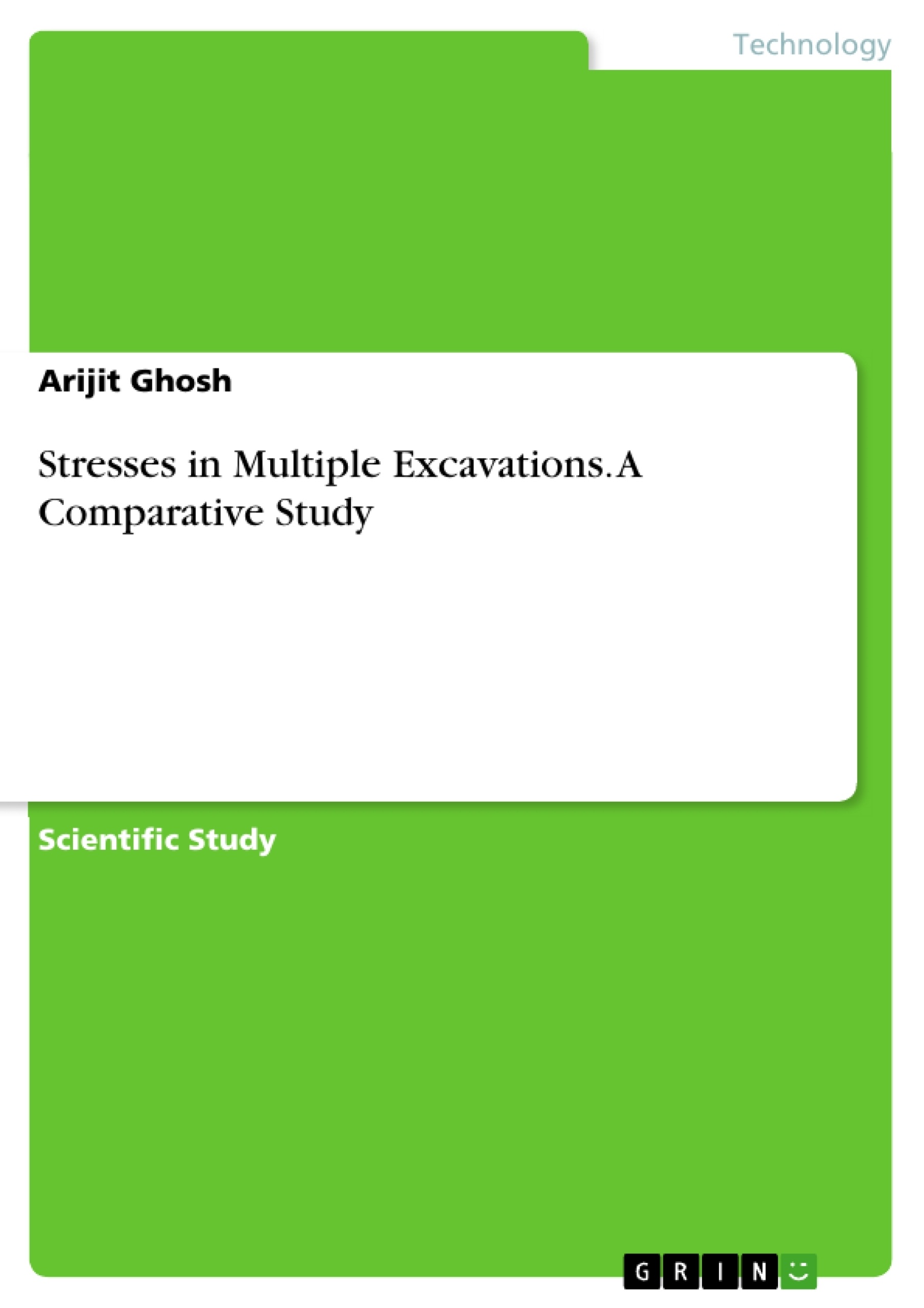Determining the stresses that exist in the rock mass opening has been a significant area of research in mining for a long time. The main reason for this is the concern of roof collapse of the excavation due to overlying pressure from the rock mass. This thesis is concerned with the state of stresses that exist in the rock mass in 2 conditions: 1. Stresses in rock before the mine openings; 2. Altered state of stresses after the excavations are made.
Theories have been formulated to calculate the pre-stressed state of the rock mass. But any sort of measurement invalidates the original condition of the intact rock. There are mainly 3 ways to study these different stress conditions in the rock mass: Analytical solutions using pre-defined mathematical equations; using numerical modelling to predict the stresses by duplicating the in-situ stress conditions; and in-situ measurements of the stress conditions in the rock mass.
One of the first assumptions taken while doing the measurements is assume that the rock mass is elastic and homogenous (single layer). There are also assumptions where the rock is considered viscous, plastic or a combination of these. But for this research project, the first assumption is considered. This is done to ease up the subsequent calculations on the more complex characteristics of the rock mass.
In this research project, the attempt is to do a comparison of the initial and final stressed conditions of the rock mass in a series of square and circular drifts between the analytical and the numerical solutions of the model. It must be noted that a completely accurate picture of the stress phenomena cannot be drawn because of the lack of knowledge of the physical properties of rock under field conditions.
The purpose of the project is to compare numerically calculated loading behavior of rock mass to that of analytical solutions obtained from the same.
Inhaltsverzeichnis (Table of Contents)
- 1.0 Pre-stressed state of the rock mass.
- 2.0 Stresses around excavations in solid homogenous materials
- 2.1 Stresses around single excavations.......
- 2.1.1 Circular Excavation.........
- 2.1.2 Square excavation ……………………..\li>
- 3.0 Analytical solutions around multiple circular and square excavations……………………………………………………..
- 4.0 Loading behaviour around circular and square excavations using numerical modelling.
- 4.1 Circular Excavation .........
- 4.2 Square Excavation
- 5.0 Results......
- 5.1 Analytical solution...........
- 5.2 Numerical solutions for circular and square excavation.........
- 5.3 Comparison of equivalent stresses and strains.......
Zielsetzung und Themenschwerpunkte (Objectives and Key Themes)
This thesis aims to analyze and compare the stress conditions in a rock mass before and after the creation of mine openings. The research focuses on evaluating the impact of excavations on the pre-existing stress state, particularly in the context of square and circular drifts. The comparison is conducted using both analytical solutions based on mathematical equations and numerical modeling techniques.
- Stress distribution in rock mass before and after excavation.
- Analytical solutions for stress calculations.
- Numerical modeling of stress conditions.
- Comparison of analytical and numerical results.
- Impact of drift geometry (square vs. circular) on stress behavior.
Zusammenfassung der Kapitel (Chapter Summaries)
- Chapter 1: Pre-stressed state of the rock mass: This chapter introduces the concept of pre-existing stress in the rock mass, emphasizing its importance in understanding the behavior of mine openings. The chapter discusses various factors influencing the initial stress state and explores the limitations of measuring it directly.
- Chapter 2: Stresses around excavations in solid homogenous materials: This chapter delves into the theoretical framework for calculating stress distribution around excavations in a homogenous, elastic rock mass. It examines the specific cases of circular and square excavations, providing mathematical equations for analyzing the stress field.
- Chapter 3: Analytical solutions around multiple circular and square excavations: This chapter extends the analytical solutions to scenarios involving multiple excavations. It presents equations and methodologies for calculating stress distribution in cases where several circular and square drifts are present.
- Chapter 4: Loading behaviour around circular and square excavations using numerical modelling: This chapter focuses on numerical modeling techniques for simulating stress behavior around circular and square excavations. It describes the methodology used in the FLAC 3D software to generate numerical solutions, providing insights into the implementation and limitations of the model.
- Chapter 5: Results: This chapter presents the results obtained from both analytical and numerical solutions. It compares the stress and strain distributions for circular and square excavations, analyzing the discrepancies and similarities between the two approaches.
Schlüsselwörter (Keywords)
The primary keywords and focus topics of this thesis include rock mass stress analysis, mine openings, analytical solutions, numerical modeling, circular and square excavations, stress distribution, strain distribution, FLAC 3D, and comparison of analytical and numerical results.
- Quote paper
- Arijit Ghosh (Author), 2017, Stresses in Multiple Excavations. A Comparative Study, Munich, GRIN Verlag, https://www.grin.com/document/380431



